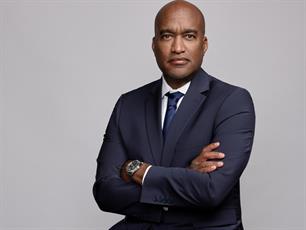Holmes Report 20 Mar 2013 // 12:00AM GMT
At a time when citizens around the world continue to bemoan a crisis of leadership in both business and politics, what they crave more than anything else is transparency, according to the second edition of the Ketchum Leadership Communications Monitor.
The survey—a poll of 6,000 respondents in 12 markets—found that 66 percent view transparent communication as a very important characteristic of effective leadership, with action-oriented behaviors such as leading by example, handling issues and crises calmly, making tough decisions and admitting mistakes all make the top five.
“Globally, people crave leaders who are honest about future challenges, clear in how to deal with them, collaborative in finding solutions and practical in their actions,” says Rod Cartwright, head of the corporate practice at Ketchum. “This particularly in a crisis, where providing a clear and timely action plan to rectify the situation, having defined the problem is key.”
And it is clear that leadership matters: a company’s leadership behavior has a direct impact on the bottom line, and poor leadership communication hits the bottom line far harder than good leadership communication helps enhances it. In 2012, the data indicated that how consumers felt about a company’s leadership affected employment recommendations, product/service recommendations, benefit of doubt in the time of crisis and stock recommendations; in 2013, 60 percent of survey respondents said they stopped buying or bought less from a company due to poor leadership behavior.
The 2012 survey found a significant (40 percent) correlation between positive perceptions of a leader’s communication and their company’s key business drivers, with 50 percent of perceptions of a leader’s overall effectiveness was tied to their communication proficiency. As a result, Cartwright says, it is important for companies to understand how leadership and leadership behaviors can affect consumers’ actions, and ultimately a company’s bottom line.
Based on these findings, Cartwright believes that the latest study confirms the formula he and his team developed in response to the initial survey in 2012, that credible leadership requires open communication plus decisive action plus personal presence.
“True leadership is impotent if it is not properly communicated and flawed unless it is informed by communications imperatives,” says Cartwright. “In other words, as we saw with our 2012 KLCM study, effective leadership and effective communication are inextricably linked.”
In 2012, 57 percent of Americans, 52 percent of Europeans, and 43 percent of the Chinese wanted leaders to be open and honest about the nature and scale of the challenge ahead. In 2013, this increases 10 points to 53 percent in China, 8 points to 65 percent in the US, remains flat (53 percent) in Europe.
People want leaders to be honest about the challenges that lie ahead,” says Cartwright. “Using cautious language and ‘sugarcoating’ the future is not appealing.” He also warns, intriguingly, that “storytelling and using inspirational words in isolation from action are declining in importance, highlighting people’s desire for facts and action instead of stories.”
In addition, half of respondents around the world (50 percent) say they want leaders to provide a clearer overall vision for how economies, businesses and other organizations can survive; 47 percent want leaders to listen and consult more to help find solutions, and to seek collaborative solutions to challenges; and 42 percent want them to focus less on overall vision and rhetoric and ore on clear plans of actions.
When it comes to decisive action, 58 percent worldwide feel that it is very important for an organizations words and action to align. Yet globally, only 23 percent feel that leaders take full and appropriate responsibility when they or their organization falls short.
“Closing the ‘say-do’ gap between words and deeds will grow in importance over the next decade,” says Cartwright. “Together with building and inspiring effective teams who will create a better future, finding ways to turn complex challenges into opportunities and seeing a clear future through the fog of today, this will be the mark of tomorrow’s leader.”
Additionally, the survey produced evidence that the most credible sources continue to be those that allow leaders to be seen and heard, relying on personal presence: in-person contact continued to be the most credible source when forming opinions about leaders, viewed as credible by 43 percent of respondents. Press release (40 percent), televised speeches and broadcast media (38 percent), print media (36 percent), and word-of-mouth (37 percent) were among the most credible sources; web chats and Twitter (9 percent), social media platforms (12 percent), and advertising (14 percent) were among the least credible.
Says Cartwright, “Global citizens are most likely to think a leader is effective by seeing and hearing them speak. Leaders should increase face time to increase credibility.”
There is also evidence that effective leaders need to have a presence internally, and in their relations with third-party influences. “Employees and third-parties are among the most trusted sources of information about an organization,” Cartwright says, “making their engagement critical to effective corporate messaging.”
But there remains a significant gap between expectation and delivery, with leaders in all categories continuing to underperform on expected behaviors, and especially the most important, such as transparent communication, leading by example, admitting mistakes and the calm handling of crisis. On average, there is a 21 percentage point gap between the expectation and the ability of leaders to meet that expectation.
Globally, 24 percent of consumers feel leaders collectively demonstrate effective leadership. Only 34 percent view business chiefs as effective leaders and just 35 percent view them as effective communicators. And communication effectiveness has decreased across all categories of leaders from 2012 to 2013: by 30 percent overall, with the biggest drops being for political leaders and business leaders (13 percentage points).
“Short-term thinking and buck-passing stand out as a major area of public concern,” Cartwright says. “Fewer than three in 10 feel leaders take appropriate responsibility when they or their organization falls short of expectations, while more than six in 10 say that admitting mistakes is a very important attribute for leaders. Equally, only business and non-profit leaders are viewed as placing longer-term considerations over short-term imperatives.”
Other key findings:
• From 2012 to 2013, there have been few significant shifts in leadership perceptions, indicating that leaders have done little to improve their standing and credibility over the past year. In 2013, 24 percent rate leaders overall as effective, compared with 25 percent in 2012, and perceptions of politicians have even declined slightly from last year.
• Business leaders’ effectiveness increased in India (+8), the US (+5), China (+5), and Brazil (+5), while it decreased in Spain (-8), the UK (-7), South Africa (-7), the UAE (-6), and Singapore (-5).
• Political leaders’ effectiveness decreased or remained the same in most countries. The biggest decreases occurred in China (-12), France (-9) and South Africa (-7).
• The majority (61 percent) of people around the world see business leaders as focused mainly on the long-term, countering stereotypes that corporations are obsessed with the next quarter’s profits. Business chiefs also come out on top for taking responsibility when things go wrong.
• Politicians, by contrast, trail behind all other leadership categories on both measures: 60 percent of those surveyed view them as short-term focused.
• The technology sector stands out as the clear leader across all industries on every metric: leadership, communication and responsibility. The sector’s combination of quality products and services, a focus on innovation, putting the customer at the heart of what they do and establishing trust provides a potentially interesting model for others to look at.
• The industries with the highest percentages of global citizens calling them out for ineffective communication are the banking and mining and extractive industries (both 15 percent).
• Moving forward, a sizeable majority are looking to Generation-X leaders (aged 35-50) to navigate the world through challenging times. 62 percent are looking to this group of leaders to navigate through challenging times, compared with just 25 percent expecting most from 50-64 year olds and 10 percent from 18-34 year olds.
• Having an ability to build and inspire effective teams (cited by 39 percent) and turn complex problems into opportunity (36 percent) are two of the most important emerging leadership behaviors.


































.jpg)






.tmb-135x100.png)










